Driving safety is of the utmost importance when a winter storm rolls in. Various types of weather events can significantly affect how you drive, and different situations call for very specific steps to stay safe. These tips can help you stay in control of your vehicle as you navigate the roadways.
Remember: Before you attempt to navigate the roads, clear all snow, ice or dirt from your windows, grill, headlights, and tail lights. Never drive with snow or ice piled on top of your vehicle as it can fly off and hit another vehicle or pedestrian or cause a dangerous road obstruction.
Driving In Ice
Driving in icy conditions can be treacherous, and sometimes clear “black” ice will form on the roads. The prime times for black ice to occur are at dawn and late evening when temperatures are coolest. Black ice can form when the air is at 32 degrees or below at the surface and rain is falling; the low temperature causes the precipitation to freeze upon impact, thus creating ice. Sleet and the refreezing of snow or water can also generate black ice.
Tip 1 – Keep a close eye on the road surface
Black ice is notoriously difficult to detect when driving. Pay close attention to the road surface when driving in potentially icy conditions, and watch out for pavement that looks dark, wet, or like new asphalt. If an area has seen very low temperatures, recent precipitation, or has a history of icing, black ice could very well be present on the roadways. Additionally, bridges or elevated roadways are more likely to form ice.
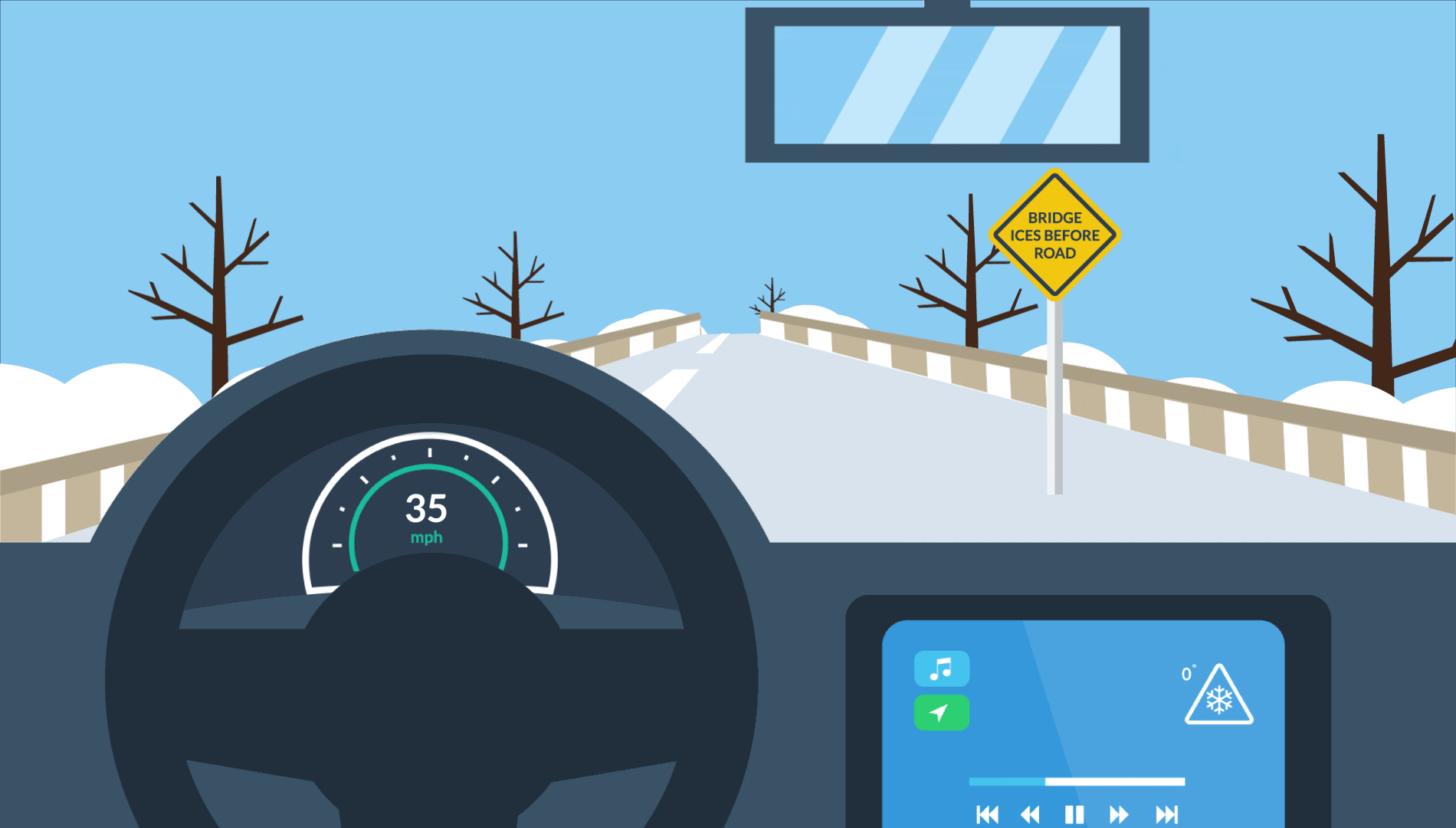
Tip 2 – Know how your vehicle behaves on ice
If you drive on black ice, your vehicle will not respond as well to driver inputs and may behave unpredictably. Avoid over-correcting with the steering wheel or panic braking. Before you get on the road, ensure that large or dangerous objects (whether inside, outside, or on top of the vehicle) are secure. Unsecured loads could result in serious injury should you hit a patch of ice (and can also result in you being pulled over and ticketed). If you are sliding on black ice and unable to stay in control, follow these steps:
- Don’t panic.
- Don’t slam on the brakes.
- Take your foot off the gas.
- Steer your car in the direction you want to go.
- Wait for the car to slow down and the wheels to catch so you can regain control.
Tip 3 – Pay attention to other drivers
If you are in an area where road icing is not common, other drivers may have a difficult time spotting and adapting to icing conditions. Make sure that you give other drivers plenty of space in case they cannot come to a controlled stop. Leave a full 8 seconds or more of driving time in between you and the car in front of you.
Driving In Snow
Snow can come in many different forms, and different types of snow present different dangers. Large, wet snowflakes can pile up quickly and cause slippery road surfaces. Small, light snowflakes can obscure visibility and build ice on windshields and other surfaces.
Tip 1 – Slow down
Snow on roadways can be just as slippery as ice. If you see a buildup of snow on the road in front of you or even just a dusting, understand that you may not have the same level of control that you are used to when turning and braking. Always slow your vehicle speed so you have more time to react to unexpected situations.
Tip 2 – Increase following distance
Even in light snow, braking ability can be severely impaired. Your vehicle can take up to double the distance to stop in snow compared to dry conditions. Ensure that there is at least 8-10 seconds between you and the vehicle in front of you, so you have time to react if the driver ahead loses control or starts to rapidly slow down.
 Tip 3 – Don’t stop on hills
Tip 3 – Don’t stop on hills
Snow can cause tires to spin and lose traction, especially on inclined roadways such as freeway ramps and hills. If you’re making progress up a hill, try not to stop or you risk losing traction. If you’re going down a hill, take it slowly and ensure that you have sufficient braking capability to stop safely. Leave at minimum 3-4 vehicle lengths in between you and the car in front of you to avoid a collision.
Driving In Whiteout Conditions
When snow gets very heavy, it can create dangerous whiteout conditions. Visibility might be limited to just a few feet in front of your windshield, and you might not be able to see the road surface or markings.
Tip 1 – Slow to a snail’s pace
The most dangerous aspect of whiteout conditions is a loss of visibility. Without the ability to see where drivers are and what they are doing, you might not have time to react if they do something unexpected. Ensure that you are driving slowly enough to have ample time to turn or brake if something happens in front of you.
Tip 2 – Make yourself as visible as possible
Whiteout conditions often cause collisions when drivers cannot see each other. Make yourself as visible as you can to others on the road. Use all your headlights (turn on fog lights if you have them). Consider turning on your hazard lights if you drop below the speed limit to alert other drivers. Communicate your intentions (using turn signals and hand gestures if necessary) to those around you so they can adjust accordingly.
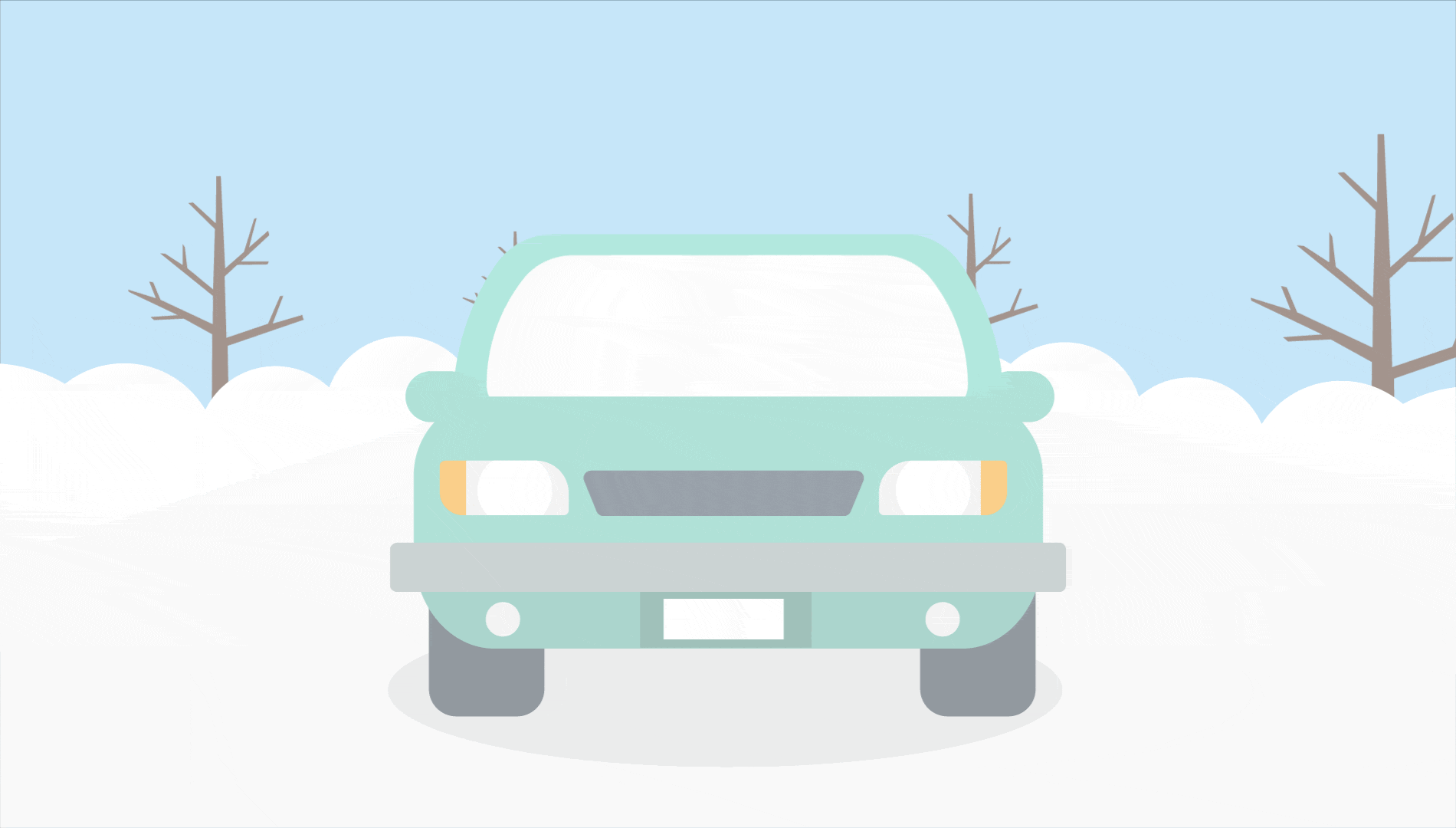 Tip 3 – Stop and wait it out
Tip 3 – Stop and wait it out
If the whiteout conditions completely obstruct your view, or you feel unable to adequately see other vehicles or control your own automobile, look for the nearest exit to wait out the storm. It’s safer if you can get to a shoulder of a road with a lower speed limit to reduce the chances of a high-speed accident where more damage/injuries could occur). If there is no other option, simply pull to the side of the road, turn on your hazard lights, and wait out the whiteout. If needed, run your motor every hour for 10 minutes at a time for heat. Crack the window to avoid carbon monoxide poisoning and periodically clear snow away from the exhaust pipe if the snow is piling up significantly.
Sources: Ready.gov, National Weather Service, Maine Bureau of General Services
Before a storm hits, review our Extreme Weather Driving Guide.
If you’re ever stranded on the road, having Emergency Roadside Service (ERS) is essential–and it’s available at your fingertips through your GEICO Mobile app! Add ERS to your policy for just pennies a day per vehicle and have peace of mind while you battle the elements.




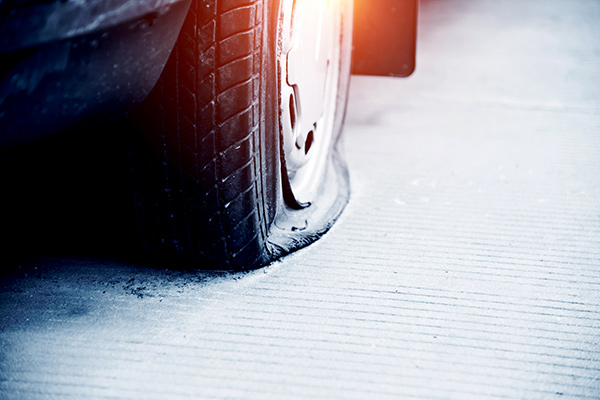

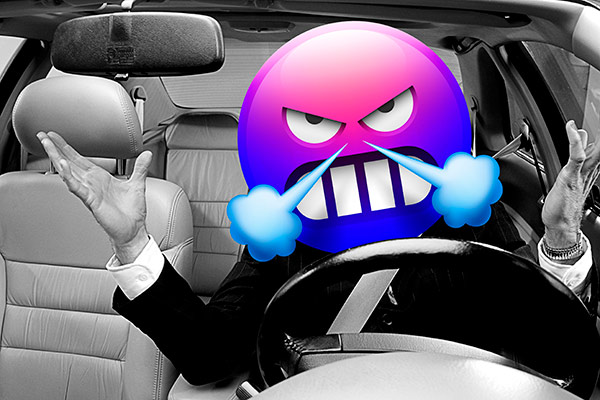
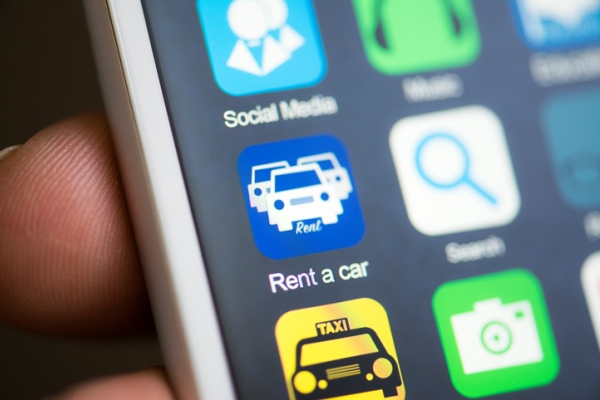


Itwaru says,
While going downhill , if possible shif gear to the lowest and the reverse going up hill. This can avoid spinning and would be good for the transmission.
Wendy Taitt says,
Thanks for the tips,will keep them in mind although I stay off the roads in bad weather.
Thank you geico.
JOANN LACKS says,
VERY NICE GOOD SENSE ARTICLE.
juan bautista serrano says,
Bery good infor information thanks geico
BAO TRAN says,
Thanks to GEICO with those awesome driving tips??
Neva Thurman says,
I think this information is very helpful.
Girish Patel says,
I wish you had also included tips on importance of tire tread depth and low tire pressure to get better control while driving in snow and icy conditions.
Elsa Oliphant says,
Thank you for these safety tips,iii keep them in mind
Rona Minholz says,
Thanks GEICO,
As this is my second year living in the northeast. The tips are very helpful and will help me do my best to drive safely and smartly.
Again Thank you
Janet B. Rhodes says,
Excellent advice you have given to us. Thank you for the tips.
I hope that everyone will take a moment to review the safety advice. To ensure a safe and happy winter season.
Thanks GICO.
Alberta Kanya says,
Excellent suggestions. I try to stay at home if we have snow. Hate the thought of an accident.
Phyllis Copelin says,
Good review, Thanks
Jignesh Ajwaliya says,
I am new here in the US and this is my first winter in the US. These tips would definitely help me to drive safe in the winter. Thanks to GEICO.
Zaheer says,
Very helpful suggestions for winter driving. Like it!
Monica Taylor Mercer says,
I always use these tips thanks.If other do these tips the road would be much safer.
Thanks